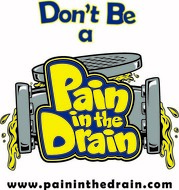|
The Draft Master Plan is up for review at the November 16, 2021 Planning Commission Meeting and the Board of County Commissioners will vote on the plan on November 17, 2021. Residents can learn about the plan by clicking here.
Clark County has changed significantly since the current Master Plan was first adopted in 1983, and the Development Code was last overhauled in 2000. While both documents have been updated over time, they have become cumbersome to use and administer, and are no longer reflective of Clark County's diverse community of interests. Throughout the Transform Clark County process, Clark County seeks to:
-
Develop an actionable implementation strategy to achieve the vision;
-
Improve alignment between the Land Use Plan and Development Code; and
-
Streamline the development processes to make them more efficient and predictable.
Clark County encompasses a large geographic area and a diverse community of interests. Ensuring that the updated Master Plan and Development Code are reflective of both countywide and area-specific priorities will require extensive community and stakeholder input. Your feedback will help shape Clark County’s future!
 Reduce landscape irrigation to one day per week
Beginning November 1 through the month of February, Southern Nevada’s mandatory watering restrictions limit sprinkler irrigation to one assigned day a week and drip irrigation to one day per week. Sunday watering is prohibited.
Our community could save more than 7 billion gallons of water each year—the entire amount of our 2022 water shortage reduction—if everyone followed the mandatory seasonal watering restrictions. Visit snwa.com to find your assigned watering day, get helpful landscape tips, and learn about water-saving rebates.
The Clark County Commission will hold a public hearing Tuesday, Nov. 2 at 10 a.m. on an ordinance to set new boundary lines for each of the seven Commission districts, a process that takes place every 10 years following the U.S. Census.
The ordinance was introduced at the Oct. 19 meeting of the board, where the public was afforded an opportunity to provide input. Residents also provided comments at an Oct. 4 community meeting.
The Nov. 2 Commission meeting will be held in the first-floor Commission Chambers at the Clark County Government Center at 500 S. Grand Central Parkway in downtown Las Vegas. Those unable to attend in person may watch the proceedings live on Clark County Television (CCTV) and at www.Facebook.com/ClarkCountyNV, www.Twitter.com/ClarkCountyNV and https://www.youtube.com/user/ClarkCountyNV/live. For more information on the process or to submit feedback, click here. One also may submit comments or questions to redistricting@ClarkCountyNV.gov.
The redistricting process is undertaken every 10 years following the national Census in order to comply with state law, which requires Commission districts to be nearly equal in population. Rapid growth in population over the last decade has resulted in great variations in population across the County’s seven Commission districts. For instance, Commissioner Justin Jones’ District F is the largest with 365,567 residents while Commissioner William McCurdy II’s District D is the smallest, having 21 percent fewer residents than District F with 287,626. If each Commission district had the same population, that figure would be 323,637 people.
CCTV is available in the Las Vegas area on Channel 4/1004 on Cox cable and on CenturyLink on Channels 4 and 1004 as well as in Laughlin on Channel 14 via Suddenlink. Live streaming of CCTV programming is available at https://www.youtube.com/user/ClarkCountyNV/live. CCTV is also available in Boulder City on Channel 4 and in Moapa Valley on Digital Channel 50.3. One may watch CCTV on streaming devices such as Roku, Apple TV and Amazon Fire TV via the YouTube app.

Clark County fire officials are reminding residents to be safe cooks on Thanksgiving and throughout the holiday season. Cooking is a leading cause of home fires. Nationally, Thanksgiving is the leading day of the year for cooking-related fires, followed by Christmas Day, Christmas Eve and the day before Thanksgiving, according to the National Fire Protection Association (NFPA).
Unattended cooking is the leading cause of cooking fires, and frying is the cooking method that poses the highest risk of fire. The NFPA discourages the use of turkey fryers due to the large amount of oil used and high cooking temperatures. The following safety tips are recommended to prevent cooking fires:
When cooking:
- Always stay in the kitchen when you are cooking on the stove top so you can keep an eye on the food.
- Stay in your home when you are cooking you’re your turkey, and check on it frequently.
- Adult supervision of children is always needed in kitchens and all cooking areas.
- Position grills, fryers and other outdoor cooking devices well away from walls, siding, deck railings, and out from under the eaves of the house and any nearby tree branches. Ensure these devices can’t tip over.
- Position grills, fryers and other outdoor cooking devices well away from walls, siding, deck railings, and out from under eaves and nearby tree branches. Ensure these items can’t tip over.
- Keep flammable materials such as oven mitts and towels away from the stove or cooking device.
- Stay alert. If you are tired or consuming alcohol, don’t cook.
- Don’t forget to turn off your oven, fryer, barbecue and stove-top burners. Every year fires are started when people turn on these items and then forget to turn them off.
- Every kitchen should have a working, multi-purpose fire extinguisher with an ABC rating. Check your fire extinguisher on a regular basis. Replace used, outdated or damaged extinguishers.
If you have a cooking fire:
- On a stove-top fire, if it is safe to do so, turn off the burner, then using caution, place a lid on the pan or pot to smother or extinguish a small fire.
- For an oven fire, turn off the oven. Keep the oven door closed to smother and extinguish the fire.
- Do not use water to extinguish a grease or oil fire. Adding water to a pan of hot oil or grease will cause the burning grease to splash out of the pan and spread the fire. Turn off the stove, fryer or propane tank supply valve, and use a lid, baking soda or fire extinguisher on the flames.
- Don’t take risks with a fire. When in doubt, get out of the home and call 911. Close the door behind you to help contain the fire. Nationally, more than half of all reported home cooking fire injuries occurred when the victims tried to fight the fire themselves.
Child safety in kitchens
The holidays can be a fun time of year to let kids help out in the kitchen. Remember these safety tips:
- Keep children at least 3 feet away from the stove, and never leave kids unattended in the kitchen.
- Ensure that pot and pan handles on stoves are turned inward to reduce the chance of accidental spills.
- Keep the floor clear so you don’t trip over kids, toys, pocketbooks or bags.
- Keep knives out of the reach of children.
- Be sure electric cords from an electric knife, coffee maker, plate warmer or mixer are not dangling off the counter within easy reach of a child.
- Keep matches and utility lighters out of the reach of children — up high in a locked cabinet.
- Never leave children alone in room with a lit a candle.

FOGG from your kitchen and bathroom should be canned, not washed down the drain. Just Can cooking fats, oils and grease from your cooking and food preparation and toss in the trash. Grit should go directly in the trash.
Putting these greasy FOGG materials down a sink causes 80% of all sewer line clogs. Raw sewage can back into homes and businesses, spilling out on to the street, and even finding its way into storm drains and back into Lake Mead.
We are asking each resident to do your part to help by keeping fats, oil, grease and grit out of the community's sewer system by properly disposing of them in the trash.
Simple steps like disposing of fat, oil, grease, and grit in the garbage instead of the drain can help significantly! Just Can It and you won't be a Pain in the Drain!
|
|